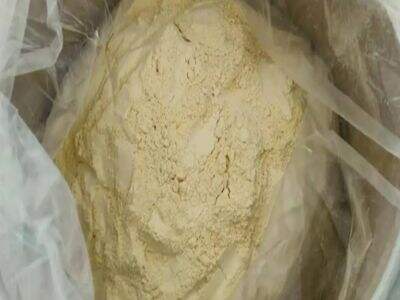Məhsulların hazırlanmasında istifadə edilən kimyəvi maddələrdən və onların çevrəmizə təsiri haqqında nə bilmirsiz? Bu kimyəvi maddələrin doğaya necə təsir etdiyini anlama vacibdir. Bu gün 2-Metilantraqvinon adlı bir kimya maddəsi haqqında danışacağıq. Bu, fərqli məhsulların hazırlanmasında istifadə olunan zavodlarda da istifadə olunur. Onun bizim yaşayış dünyamızda hansı təsirləri olduğunu və niyə diqqət yetirməli olduğumuzu daha yaxşı öyrənək.
2-Metilantraqvinonun Doğaya Təsiri
Bəzi zavodlar, materialları rəngləmək və digər məhsullar hazırlamaqda istifadə olunan boyaları hazırlamaq üçün 2-Metilantraqvinon kimyasalını istifadə edir. Bu proseslərə çox faydalı ola bilərsə də, çevrəmizə ciddi zədə verə bilər. Mühitə qoşulması, hava və ya suya doğrudan sızmaqla yaranır. Bu mühit sulubu xəstəliyi bitkilər və heyvanlara çatmaqla bağlı olan yaşamasını çətin edən təsirlərə sahibdir. Məsələn, balıq və digər su mahlukları, buzaq suyu təchizatına keçid etdikdən kimi, onların habitatlarına daxil olan zədəli kimya maddələrindən təsir ala bilərlər. Bu, tabiatı nötrallaşdırır və ekosistemlərin tamamı üçün nəticələrə səbəb olur və yerlərimizin bərpası mümkün olmayan zədələnməsinə səbəb olur.
2-Metilantraqvinonun Çevrəyə Təsiri
2-Metilantrenkinonun fabrikalarda mövcudluğu, doğanın müxtəlifləşməsinə mühüm kəsbiyyətlərdən biridir. Bu kimyəvi maddənin istehsalı hava və suya zehmetli maddələrin atılmasına səbəb olur və həm də güc və resursların çoxunu tələb edir. Bu eyni kimyəvi maddini istehsal edən yerlər elektrik və ya suyun böyük miqdarını da istifadə edə bilərlər, bu isə iklim dəyişikliyinin səbəbli olanlarıdır və bizi sahib olduğumuz digər qiymətli tabii resurslar ilə əlaqədən uzaklaşdıra bilər. Bilgi gücdür və 2-Metilantrenkinonun istifadəsinin neden çevrəyə pislik olduğunu öyrənmək, daha çox ekoloji üsullar tapmağın ilk addımı ola bilər. Buraxılan yağlı körmələrin yerini nə qədər artıq çəvrəni saxlamaq və gələcək nəslər üçün yerdə saxlamaq üçün alternativlərlə əvəz edilə bilər.
2-Metilantrenkinonun istehsalının qaranlıq yanı
Əgər 2-Metilantraqvinon özü dəşək bir kimyəvi maddə deyilse, onun hazırlanması prosesi gizli təhlükələrlə dolu ola bilər ki, bu da planetimizin ekosisteminə olumsuz təsir edə bilər. Kimyəvi maddənin hazırlanması üçün lazımi ham materialları çıxartmaqdan nəticə məhsulu tranqlarına qədər olan prosesin hər addımı müxtəlif üsullarla çevrəni zədələ bilər. Məsələn, ham materialların əldə edilməsi ormanların təzələnməsinə səbəb olmaqla bir çox heyvanların evini pozabilir. Son olaraq, nəticə məhsulunun tranqlarında isə hava pollyusyonu və dünya istilikləri ilə bağlı karbon emisyaları yarada bilər. Bu isə təzə su köçürmələrimizin pollüsyonudur, ekosistemlərə zədə və heyvanların yaşayış yerlərini razı etməkdir. Bu gizli xərcləri nəzərə alsaq, 2-Metilantraqvinonun istifadəsi ilə bağlı asılı mənasını daha yaxşı anlaya bilərik.
Daha çox insan işləməklə bağlı problemlərlə bağlı olaraq 2 Methylanthraquinone son zamanlarda fabrikalarda. Alıcılar çevreye ve seçimlerinin etkisine daha fazla dikkat ederken, şirketler temizlemek zorunda hissediyor. Bu da şirketlerin yer için daha az zehirli olan diğer kimyasallara bakmalarını gerektirir. Ayrıca, etkilerini azaltmak için bazı geri dönüşüm ve atık azaltma programları başlatmalıdırlar. Bu sürdürülebilirlik meydan okumaları hakkında bilinmiş kalmak, fabrikaların daha çevreye uygun hale gelmesine ve kirliliğini azaltmasına yardımcı olacaktır. Bu değişim, herkesin sağlıklı bir gezegende sağlıklı bir hayat yaşamasına imkan tanıyabilir.
2-Metilantrenkuinon: Üretimde Dönüşüm
SOCOTHERAPY 2-Metilantraqvinon ilə Korporativ Məsuliyyət haqqında Fikir Yüksəltməsi. Dünya çarşısının planetimizə daha şirin baxması səbəbindən, 2-Metilantraqvinon-un əvəzinə daha sürdurable seçimlər gəlməsi biznes və hər cür səviyyədəki idarələr üçün artıq daha vacib olur. Bu dəyişiklik, istehsal sahəsində yeni fikirləri öndə çıxardı. Məsələn, şirkətlər toxikliyini azaltan və məhsullarının istehsalında daha təmiz proseslərə səbəb olan yaşıl kimya maddələrini inkişaf etdirirəcəkler. Və bu dəyişiklikləri dəstəkləyərək və praktikada tətbiq edərək, gələcək üçün planetimizi qorumağa kömək edə bilərik. Bu sərhəddədə biz hamısı da özümüzdən gələn hissəni yerinə yetirməliyik.
Nəticədə
Zehmet olmasa, 2-Metilantrenkinon istifadə edən zavodları çevrəvi mühit çalıqlarınızda daxil edin. Bu maddənin necə çevrəvi mühitə təsir etdiyini, təsirlərini, plastik ilə bağlı gizli xəylləri, sürdüliyi problemləri və daha təmiz alternativləri araşdırmaq birgə sürdülüyünə uyğun bir geleceğe doğru adımı atmaq üçün edilə bilər. MenJie'nin Çevrəvi Mühit SorumluluğuGözləməsiMenJie çevrəvi mühitə təsirini azaltmaq və istehsal zamanı ekolojiyyə dost qaydaları təbliğ etmək üzrə cavabdeyişliktədir. Hər kiçik addım kömək edir və səhih seçiminizi və məsuliyyətli şəkildə idarə olunan şirkətləri dəstəkləməklə biz hamı daimi nəslər üçün dünya Bizim dünyamızı saxlamağa kömək edə bilərik. Birgə dünyanın sağlanmasına və mutluluğa nail olunaq!
 EN
EN
 AR
AR BG
BG HR
HR NL
NL FI
FI FR
FR DE
DE IT
IT KO
KO NO
NO PL
PL PT
PT RU
RU ES
ES SV
SV TL
TL ID
ID LV
LV SL
SL UK
UK VI
VI SQ
SQ HU
HU MT
MT TH
TH TR
TR FA
FA MS
MS BE
BE HY
HY AZ
AZ KA
KA BN
BN CEB
CEB






